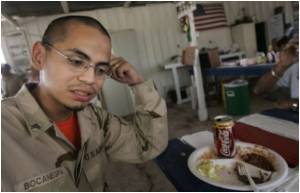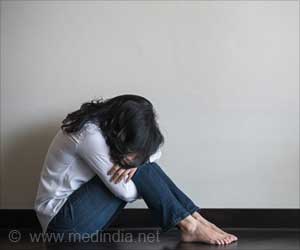Victims who have experienced trauma and portray symptoms of PTSD are benefited with prolonged exposure therapy, cognitive therapy, and delayed prolonged exposure therapy.

Arieh Y. Shalev, M.D., and colleagues from Hadassah University Hospital, Jerusalem, Israel, conducted a study to compare early and delayed exposure-based, cognitive and pharmacological interventions for preventing PTSD. Study participants were selected from consecutively admitted survivors of traumatic events at Hadassah Hospital in Jerusalem, through a telephone-based interview a mean (average) 9.61 days after the traumatic event occurred. Patients identified as having symptoms of acute stress disorder during the telephone interview were referred for clinical assessment, and those who met PTSD symptom criteria during assessment were invited to receive treatment.
The authors randomly assigned consenting patients to one of four intervention groups: prolonged exposure (PE), cognitive therapy (CT), a double-blind comparison of treatment with a selective serotonin reuptake inhibitor (SSRI) vs. placebo, or a waiting list (WL) control group. The study design allowed participants to decline treatment options they did not desire, and to be randomly assigned to one of the remaining treatment groups. Participants in the WL group who met PTSD criteria at the five-month follow-up received PE at that time, to compare the effects of a delayed intervention on PTSD symptoms. Prolonged exposure included psychoeducation, training in breathing control, prolonged imaginal exposure to traumatic memories and in vivo exposure to avoided situations. Cognitive therapy included identifying and challenging negative automatic thoughts and modifying underlying cognitive schemas. Participants in each of these groups received 12 weekly 1.5-hour sessions administered by clinical psychologists with prior PTSD treatment experience. PTSD prevalence was determined using the Clinician-Administered PTSD Scale (CAPS).
Following randomization, 63 participants started PE, 40 started CT, 93 were placed on the waiting list and 46 were in the SSRI and placebo subgroups (23 in each group). At the five-month follow-up, the prevalence of PTSD in the PE and CT groups (21.4 percent and 18.2 percent, respectively) were significantly less than in the WL, SSRI and placebo groups (58.2 percent, 61.9 percent and 55.6 percent, respectively). The analysis showed significant group differences in CAPS and mean (average) PTSD Symptom Scale-Self Report scores at five months, showing fewer PTSD symptoms in the PE and CT groups compared with the WL, SSRI and placebo groups. At the five-month follow-up, 57 WL participants had PTSD and were eligible for delayed PE and 41 started treatment at that time.
At the nine-month follow-up, the prevalence of PTSD in the PE, CT and WL groups were 21.2 percent, 22.8 percent, and 22.9 percent, respectively while rates for the SSRI and placebo subgroups (42.1 percent and 47.1 percent, respectively) remained higher. Analysis also showed significant group differences in CAPS and mean PTSD Symptom Scale-Self Report scores at nine months, showing fewer PTSD symptoms in the PE, CT and WL groups compared with the SSRI and placebo groups. Participants with partial PTSD before treatment onset did similarly well with and without treatment.
"The results of our study show that there are significant and similar preventive effects of PE and CT," the authors conclude. "Our finding suggests that delaying the intervention does not increase the risk of chronic PTSD…Thus, a delayed intervention is an acceptable option when early clinical interventions cannot be provided (e.g., during wars, disasters, or continuous hostilities)."
Advertisement
(Arch Gen Psychiatry. Published online October 3, 2011. doi:10.1001/archgenpsychiatry.2011.127. Available pre-embargo to the media at www.jamamedia.org.)
Advertisement
Source-Newswise










